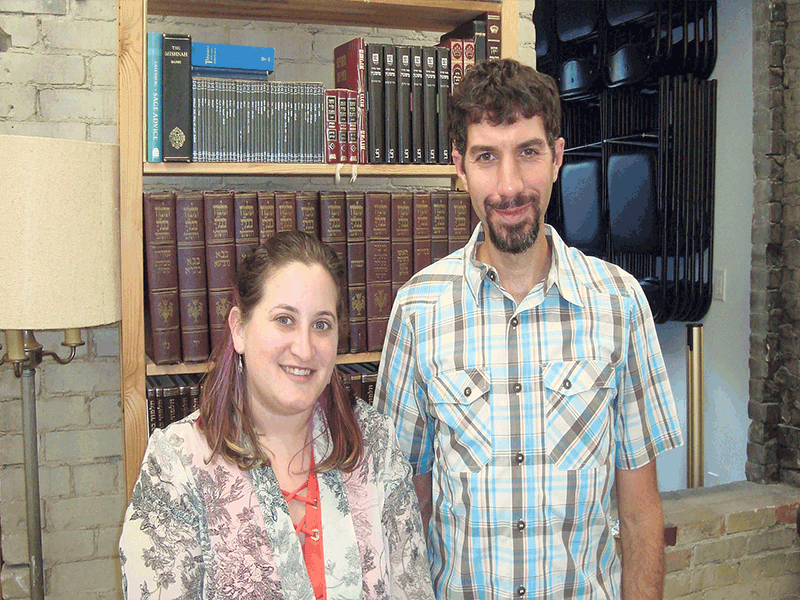Makom is a place in downtown Toronto that takes its mandate of inclusivity and diversity very seriously.
Originally conceived in 2009 as a venue for Jews of all persuasions and levels of observance to gather in a spiritual community while enjoying Jewish cultural and educational pursuits, it offers Erev Shabbat services in an Orthodox setting once every two weeks, with separate seating for men and women. Men and women participate fully in prayers, with dual minyanim (prayer quorums) consisting of 10 men and 10 women.
As diverse as it is, fusing Jewish tradition with progressive values, Makom hasn’t satisfied everyone. Recently, a gender non-conforming person, who identifies as neither male nor female, raised concerns over seating arrangements.
“Approximately a year and a half ago, they (the pronoun preferred by the individual) expressed their discomfort with only men’s and women’s seating options at Makom’s services, so they and I had conversations to figure out how best to welcome this person and other gender non-binary folks to be part of Makom’s services,” said Rabbi Aaron Levy, founder of Makom and its executive director.
READ: RABBIS WEIGH IN ON ASSISTED DYING, A YEAR AFTER IT’S LEGALIZED
“Based on those conversations and with Makom’s board’s approval, Makom has, for the past year and a half, tried to accommodate gender non-conforming people by offering a third seating section that’s only for gender non-conforming people, located between the men’s and women’s sections,” he said.
“Under Makom’s current prayer structure, transgender people who identify with a particular gender simply sit with the gender with which they identify. So a trans man sits in the men’s section and a trans woman sits in the women’s section. The addition of the third section about a year and a half ago was intended specifically to accommodate gender non-binary/non-conforming people, who comprise a subgroup of transgender people,” added Rabbi Levy, who describes himself as modern Orthodox.
Other families, some of which are interfaith couples, raised concerns about seating as well, saying they did not wish to sit apart from the rest of their family.
To address these concerns, Makom invited members to a public meeting in June, while also soliciting email participation from other supporters.
It’s become “a topic of communal conversation,” Rabbi Levy said.
Five possible solutions are currently being considered by the board. The solutions look at possible changes to seating arrangements and to minyan configurations that would be acceptable to participants. Options include retaining the status quo or including a mixed seating area separate from the men’s and women’s sections. Discussion of shifts to minyan requirements is also on the table, with suggestions that include a more traditional 10-man minyan being joined by a 10-person minyan, where gender identification would not be a factor.
The board’s decision is expected at any time and will be implemented immediately for Friday night services. However, Rabbi Levy said it’s too late to make changes for the High Holidays this year.
Whatever the board decides, “This is about how to welcome more Jews to Makom,” he stated.
It is that inclusivity that appeals to Louise Smith, Makom’s president.
“It brings together people who have common values, even if our beliefs and practices may differ,” she said.
However, “Makom’s model will not work for everyone,” Smith acknowledged. “Every person has their own perspective on what would be the ideal Jewish environment for them, and some of those visions will conflict. So I don’t think we would ever be able to accommodate every person.
“What I hope is that we are able to demonstrate enough compromise and creativity that we can still be inclusive of as many people as possible, and that people will participate in shaping that compromise…. We also needed to ensure that the options we presented accommodated the needs of both traditional and liberal Jews, to the extent possible.
“It is possible that, whatever we decide, for some people it will be too far, and for others it won’t be far enough. And so, some people may choose not to be part of Makom’s services. But I’d hope that even those people would still want to participate in the activities outside of services, because there are so many other aspects of the Makom community, and we’d always welcome people to get involved in our events and celebrations,” Smith said.
Rabbi Levy, a U.S.-born clergyman who moved to Toronto in 2006 to work with Hillel, founded Makom with the goal of creating a community consisting of Jews of various backgrounds, ages, situations in life, sexual orientations and gender identities.
Makom offers a traditional Friday night service in Hebrew, but with plenty of music, song and spirituality, he said.
Participants are welcome to bring musical instruments to play and jam before services begin, said Rabbi Emma Gottlieb, Makom’s director of education and family programming, who comes from Judaism’s Reform movement.
Regular services attract up to 60 people in a small College Street venue, while High Holiday prayers are held at the University of Toronto’s Hart House. Last year, 275 people attended. Makom also offers an afternoon children’s education program that has attracted 70 youngsters, and it recently launched a bnei mitzvah program.
Makom’s “storefront” aspect makes it accessible to people walking by, said Rabbi Gottlieb. “Often, people poke their heads in and ask who we are.”
Makom is a welcoming place that invites “people to go deeper into Judaism,” Rabbi Levy added.
